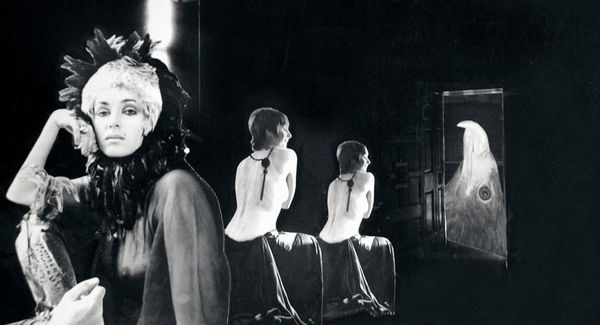Eye For Film >> Movies >> Penny Slinger: Out Of The Shadows (2017) Film Review
Penny Slinger: Out Of The Shadows
Reviewed by: Amber Wilkinson

Does the name Penny Slinger ring a bell? Quite probably not. But you won't be many minutes into Richard Kovitch's documentary before you think it certainly should. Yet, despite the fact that she became something of an artistic It Girl in the Seventies, with sexually liberated, edgy work including 50% The Visible Woman and An Exorcism and an acre of magazine articles celebrating her work, she has since sunk back into obscurity despite the obviously influential nature of her art.
The idea of visibility and invisibility of women still has a massive resonance today, so this re-examination of Slinger's back catalogue feels timely, with Kovitch essentially taking a chronological approach to her life and career. Part of a counter-culture that also included her partner-at-the time and collaborator Peter Whitehead and the likes of Jack Bond, Slinger is striking in that she says she wanted "to be my own muse". She used her body in almost all of her work of the period, turning it into wedding cakes or pairing it with sexual of fetish imagery that would certainly have been considered avant-garde at the time and still, perhaps, carries the power to shock today. Kovitch contextualises her art well and builds up a sort of collage of her life - helped by a raft of talking heads of those who know her and, most ably, by Slinger herself, who proves to be an open and engaging interviewee.

The format of the film itself can't help but feel staid and rather dusty by comparison to Slinger's often surreal approach, although an atmospheric soundtrack from Psychological Strategy Board adds to the vibe. Some of the darker times Slinger experienced as part of the artistic group she was part of during the period also beg for more exploration, but having brought her"out of the shadows" director Richard Kovitch seems unwilling to dally too long in the darker side. The film is also quite narrow in its viewpoint, zoning in on the Seventies and touching only briefly on her work since, despite the fact she is still an active artist. That decision feels more in keeping with Kovitch's desire to present the film as a total 'rediscovery' of an artist, along the lines of Searching For Sugarman, that an organic development of shape, but it is true that the Seventies also represents the pinnacle of her fame.
Above all, Kovitch is aiming to celebrate Slinger's artwork and, by extension, probe at different approaches and attitudes to the word "feminism" and the impact that patriarchal expectations have had on women's art. Although this means that some things inevitably fall outside the 'frame' of this documentary, it nevertheless offers a fascinating insight into Slinger's work that's well worth catching on a big screen, where her art can be fully appreciated.
Reviewed on: 27 Jun 2019

















